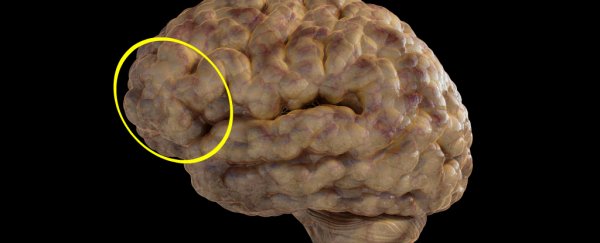Researchers have added to a growing body of evidence linking criminal psychopathy and changes in the prefrontal cortex of the brain.
After scanning the brains of 124 inmates in the US, the team found that psychopathic traits such as a lack of empathy and impulsive antisocial behaviour were associated with larger than average grey matter volumes in the prefrontal cortex.
The find doesn't necessarily mean changes in the prefrontal cortex can cause psychopathy or vice versa - correlation does not equal causation, after all.
But it's not the first study to connect changes in the prefrontal cortex to psychopathy, and it suggests a link worth investigating further - particularly if it could help researchers find ways to better predict who might be at risk of displaying psychopathic traits and intervening before they commit a crime.
"Individuals with psychopathy account for a disproportionate amount of crime in the United States," one of the researchers, Cole Korponay from the University of Wisconsin-Madison, told Eric W. Dolan at PsyPost.
"Though they only comprise about 1 percent of the population as a whole, individuals with psychopathy make up between 15-25 percent of the prison population and are estimated to be responsible for nearly US$460 billion in criminal social costs annually."
Psychopaths are generally classified as people with antisocial behaviour, impaired empathy, and egotistical traits. And contrary to what Hollywood might tell you, they're not all geniuses.
And not all psychopaths will go on to become criminals - some are very high-functioning members of society - but seeing as many struggle with self control, and an inability to think about how their decisions might affect others, the traits can often lead to criminal behaviour.
Although previous studies had linked some of those traits with the prefrontal cortex - a region associated with planning, moderating social behaviour, and decision-making - researchers hadn't gone into detail before looking at the substructures within that region of the brain.
So to get a better understanding, the researchers conducted MRI scans on 124 inmates in a medium security prison in Wisconsin.
The inmates were also tested for psychopathic traits using the Psychopathy Checklist Revised - a common 20-question diagnostic test that's used to measure where someone sits on the psychopath scale.
When the team checked if these traits were associated with any abnormalities in the brain, they found that inmates who displayed psychopathic tendencies had larger than normal grey matter volume in the prefrontal cortex.
They also found a correlation between psychopathy and greater connectivity between two particular subregions of the prefrontal cortex - the left middle frontal gyrus and the right inferior frontal gyrus.
"The results were not attributable to age, race, IQ, substance use history, or brain volume," the researchers write in Social Cognitive and Affective Neuroscience.
"Collectively, these findings provide evidence for co-localised increases in prefrontal cortex volume and intra-prefrontal functional connectivity in relation to impulsive/antisocial psychopathic traits."
For now, the team still has no evidence on how these changes might come about, or how they might increase the risk of psychopathy - so it's too soon to say whether or not this information could be used to help better treat and diagnose psychopaths.
But it gives researchers a good starting point to look for more clues.
"Future studies can examine potential genetic and environmental factors that may cause abnormal development of the prefrontal cortex in individuals with psychopathy," Korponay told PsyPost.
The research has been published in Social Cognitive and Affective Neuroscience.

